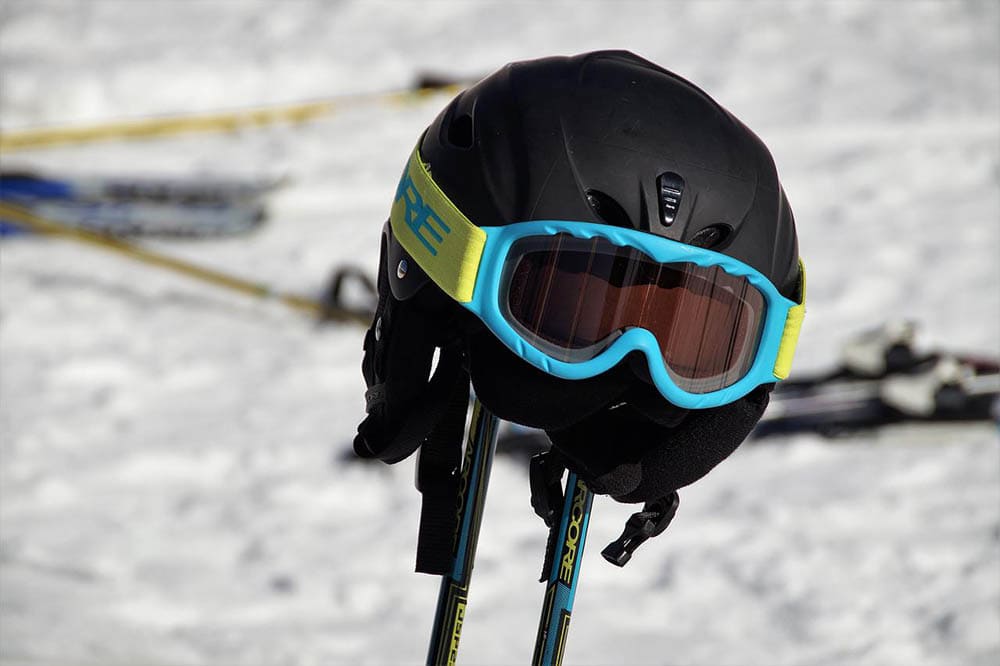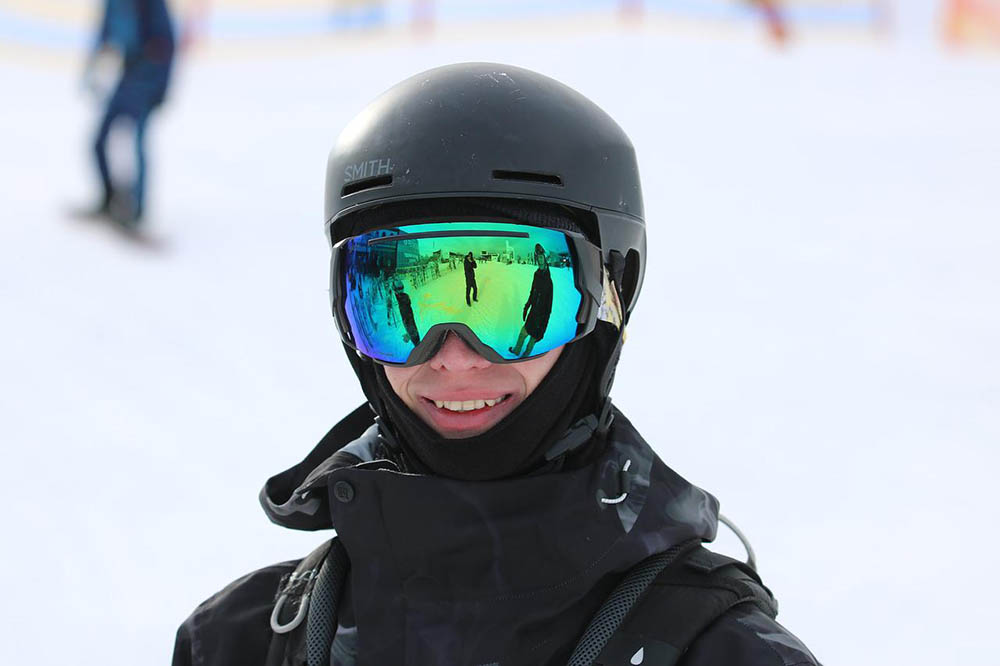What is VLT in Ski Goggles? What You Need To Know
Last Updated on

If you’re in the market for a quality set of ski goggles, you might have heard the term “VLT” mentioned and wonder why it should matter to you. VLT stands for Visible Light Transmission and refers to the amount of light allowed to pass through the goggle’s lens.
When buying ski goggles, there are many things to consider, such as shape and size, ventilation, and the material they’re made from. However, arguably one of the most important aspects is VLT.
Keep reading to find out what VLT does and what rating would be perfect for you.

How Does the VLT Rating Work?
Simply, the lower the percentage and VLT rating, the less light the goggles will let in, which is great for sunny days. The higher the percentage and VLT rating, the more light the goggles will let in, which is great for cloudy days.
VLT ratings are listed as percentages on a 0%–100% scale, but typically you won’t use goggles at either end of this scale. The rating usually starts at around 5%, which is useful when the sun is particularly blinding, and you’re unlikely to use goggles with a rating over 90%.
That isn’t to say goggles with these VLT ratings aren’t used, so we have included them in our list. For example, if you like to ski in the dark, a VLT rating of 90%–100% would be ideal because it will let in as much light as possible.

What VLT Rating is Best for Me?
The VLT rating that will work for you is dependent entirely on the conditions you like to ski in. It can be daunting figuring out how to find the perfect goggles for you, especially when it isn’t just about VLT. Lens color and tint also factor into this decision as these can affect the VLT rating.
VLT Rating for Very Bright Days: 0%–5%
These lenses are designed for very sunny days, high altitudes, and glacier skiing in the summer, for example. These lenses would have a very dark tint. Colors such as black, brown, or bronze are best for sunny days because they provide shade and have high VLT. Brown, for example, also has the added bonus that it enhances your depth perception.
VLT Rating for Bright, Sunny Days: 5%–18%
A lens with a low VLT rating will reduce how much sunlight comes through. If you wear a lens with a higher VLT rating on sunny days, you will find yourself suffering from fatigue and eye strain as the lens fails to block out the sunshine.
The colors commonly used for lenses with low VLT are red, copper/bronze, dark gray, or silver. Mirrored finishes also are an option, and they reflect 65% more sunlight than tinted lenses. This helps to lower the VLT rating for colors you may not usually see in this range, such as blue-green or sapphire-purple.
VLT Rating for All Conditions: 18%–43%
If you are looking for something that will protect you against bright sunlight but will also offer good visibility on overcast days, aim for a mid-range VLT lens. This is a recommended VLT rating as they work well with the sunlight, clouds, and shadows.
The lens will have a medium tint, and the colors best suited are amber, reddish-orange, or dark pink.

VLT Rating for Overcast and Sunny Days: 43%–65%
This category is the most adaptable regarding varying light conditions. This rating will offer protection from sunlight on sunny days without the vision being too dark on overcast days. However, this mid-level rating will only work in mild cases of bright and overcast days.
If a day is too sunny, you will find yourself suffering from eye strain and fatigue, and on days the weather turns to snow or it’s a darker evening than you are expecting, it will be too dark to continue skiing.
Common colors for these lenses are red-orange, green-blue, light or dark pink, and amber.
VLT Rating for Overcast and Snowy Days: 65%–80%
This rating is reserved for those days with no sunlight, even some night skiing and skiing in stormy weather. It may seem obvious, but never use these lenses on a bright day at the risk of severe eye strain and, in some cases, damage caused by the glare.
In terms of colors, almost all these lenses will be some variety of light pink or yellow. These colors will protect against the little sunlight and increase the contrast for low or flat light conditions.
VLT Rating at Night: 80%–100%
As you would use these lenses for night skiing, there would be an extremely light tint or none at all. Only clear lenses would be needed.

Advantages of a Specific VLT Single Use Lens
Choosing goggles to fit your purpose means never being caught short. You don’t have to spend extra money on an interchangeable lens you won’t use, and you don’t have to take multiple lenses with you up a mountain. This can be fiddly as some styles are not as easy as others.
Disadvantages of a Specific VLT Single Use Lens
If the weather changes, you are stuck with goggles that may hinder your vision, which is the opposite of what you want from your goggles. You are also trapped by time. If, for example, you use the lenses with a mid-range VLT, they will keep you safe at most times of day, but you can’t ever choose to ski at night.
In the long run, interchangeable lenses work out cheaper if you like to ski in differing weather and times during the day when the light is drastically different from one another, like in the morning and night.

Frequently Asked Questions (FAQs)
Why Do I Need Goggles?
Sunglasses may feel like a better option at first because they are more lightweight and cheaper, but goggles have too many benefits to ignore. They protect you from harmful UV rays and provide a more substantial barrier than sunglasses because they are fitted. This also means they keep your eyes from watering which can occur thanks to the airflow when you’re traveling at speed. They protect against harsh winds and snow and keep your eyes protected from debris like ice, stones, and twigs.
I Need Interchangeable Lenses, Where Do I Start?
Many interchangeable goggles on offer come with additional lenses to meet those overcast or flat light conditions. These lenses are usually clip-in or magnetic to make the switch more seamless.
Many interchangeable goggles come with an alternative lens for overcast or flat conditions. If yours doesn’t, choose the second lens based on the one you already have. For example, if you have one with a VLT rating on the lower end, around 18–25% pick the second lens to be around 35–65% and you will be covering most of your bases when it comes to lighting conditions.
How Much Do Spare Lenses Cost?
Spare lenses can start around the $40 mark and go up to $150. Buying interchangeable lenses can be costly but is a cheaper option in comparison to buying different pairs of goggles.

Final Thoughts
It’s clear there’s a lot to think about when it comes to picking goggles that will work for you. Remember, finding the right VLT rating can drastically change your experience, safety, and convenience.
It can be confusing deciding where to start, but the logical place is in figuring out when you most like to ski. If the answer is that you don’t know, then opt for mid-range goggles. Now you have all the information, you can make a better decision and find the goggles to fit all your needs.
Related Read: How to Clean Ski Goggles in 8 Easy Steps
Featured Image Credit: ivabalk, Pixabay
About the Author Kerry-Ann Kerr
Related Articles:
What Is the Best Binocular Magnification for Hunting? Optical Features Explained
Can You Use Binoculars to Look At Stars? How to Choose the Right Pair
How to Clean a Refractor Telescope: Step-by-Step Guide
How to Clean a Telescope Eyepiece: Step-by-Step Guide
How to Clean a Rifle Scope: 8 Expert Tips
Monocular vs Telescope: Differences Explained (With Pictures)
What Is a Monocular Used For? 8 Common Functions
How to Clean a Telescope Mirror: 8 Expert Tips
